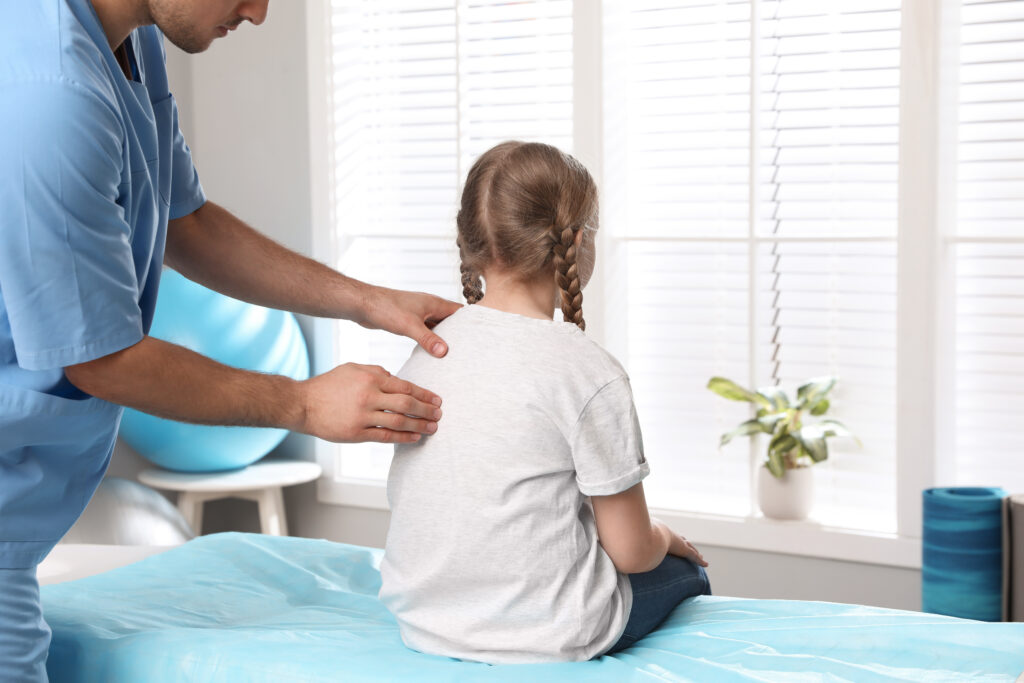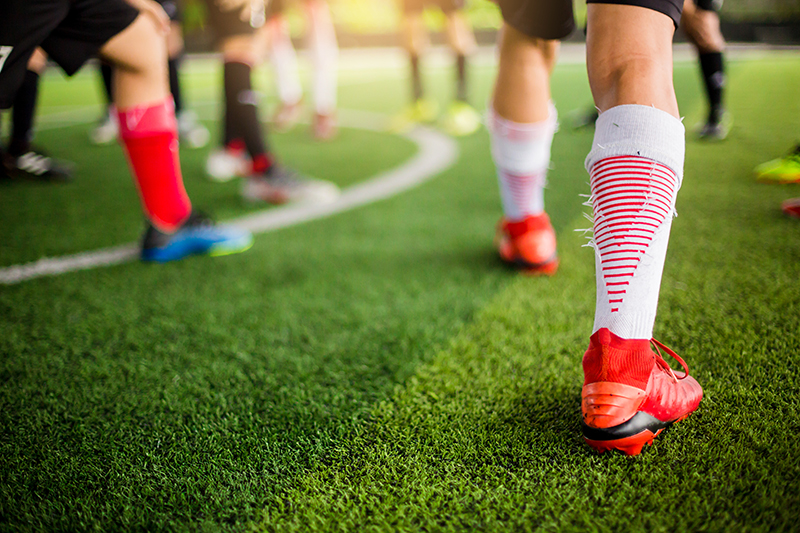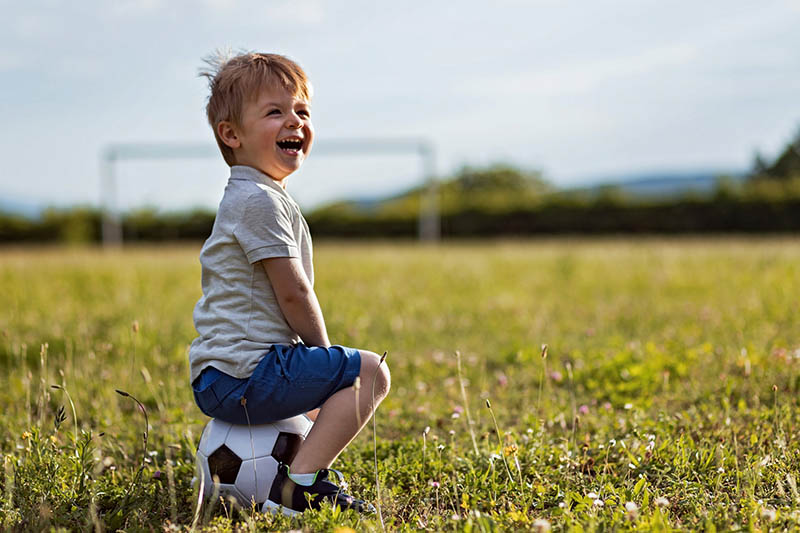When most people hear “scoliosis,” they think of a curved spine or the possibility of wearing a brace. But scoliosis can influence much more than just posture—it can have various effects throughout the body. The good news is that these impacts can be well managed with early diagnosis and proper treatment, and many children lead active, healthy lives. Understanding how scoliosis impacts your body can help you make informed choices and support your overall well-being, whether your child has mild scoliosis or a more pronounced curve.
How Scoliosis Affects Your Child’s Posture
One of the most noticeable effects of scoliosis is how it alters a child’s posture. The curvature of the spine, particularly when it goes beyond 10 degrees, creates visible changes that often develop gradually. This might include uneven shoulders, an imbalanced waistline, one hip higher than the other, or a body leaning to one side.
These changes in posture often result from muscle imbalances, as the muscles on one side of the spine become overactive while those on the opposite side weaken. The result is an asymmetrical appearance that may become more pronounced as the spine curves further. Children with scoliosis may also report difficulty sitting or standing for long periods, and their clothes might not fit evenly due to the misalignment of their bodies.
Over time, poor posture caused by scoliosis can affect balance, coordination, and even daily activities like walking or carrying a backpack, which may become uncomfortable or painful.
The Impact of Scoliosis on Breathing and Lung Function
One of the more surprising ways scoliosis can influence the body is through its connection to respiratory function. In cases where the spinal curve becomes more pronounced—particularly beyond 80 degrees—the shape of the rib cage may shift slightly, which can reduce space in the chest cavity and impact how the lungs expand.
This is most commonly seen when scoliosis affects the thoracic spine (the mid-back region). Some children may notice mild changes in their breathing patterns, such as getting winded a bit more easily during physical activity or needing more rest during sports. Fortunately, with proactive care and personalized treatment, these issues can often be well managed or even prevented from progressing.
How Scoliosis Can Influence Physical Development
The spine plays a key role in supporting overall body development as children grow. Scoliosis, especially in early childhood or adolescence, can interfere with normal growth and symmetry. Physical development can be dramatically affected depending on the type of scoliosis, such as neuromuscular scoliosis (which may be associated with conditions like muscular dystrophy or cerebral palsy).
Scoliosis may alter the shape and length of the torso, resulting in uneven leg lengths, reduced flexibility, and a general lack of alignment across the parts of the body. Some children may experience delayed motor skills, coordination challenges, and even digestion issues, as abnormal spinal alignment may pressure the digestive system.
In addition, spinal structure changes can strain surrounding muscles and joints, sometimes contributing to chronic back pain. This discomfort, especially if untreated, can interfere with sleep, school activities, sports, and more.
Emotional and Social Effects of Scoliosis in Children
In addition to the physical aspects, scoliosis can also influence a child’s emotional and social well-being. While wearing a brace or noticing changes in posture may bring moments of self-consciousness, many children find strength and confidence through support, encouragement, and the right resources.
During adolescence, when body image becomes especially important, it’s natural for kids to want to feel like they fit in. But with the right guidance, children with scoliosis can learn to embrace their unique experiences and thrive socially. Support groups—like your local CurvyGirls chapter—offer an uplifting community where girls with scoliosis can connect, share their stories, and feel empowered. Being part of a group that understands can make a world of difference in how a child views their journey.
Emotional support from loved ones, healthcare professionals, and peer groups, along with open communication, can help children feel more confident, stay active in the things they love, and develop a strong, positive self-image.
Long-Term Health Risks of Untreated Scoliosis
When scoliosis goes undiagnosed or untreated, the long-term risks become more serious. Progressive spinal curves can lead to chronic issues well into adulthood.
In more advanced cases, untreated scoliosis can cause spinal deformities that interfere with the spinal cord and nerve function, leading to numbness, tingling, or muscle weakness. Severe curvature may also compress internal organs, complicating heart and lung function, digestion, and mobility.
Because scoliosis can advance without obvious symptoms initially, especially in mild scoliosis, it’s essential to detect and monitor it early. When caught early, scoliosis treatment—observation, bracing, or surgery—can prevent these long-term consequences and allow children to lead healthy, active lives.
Early Signs of Scoliosis to Watch For
Identifying scoliosis early is key to minimizing its impact. Some early signs to look out for include:
- One shoulder blade that sticks out more than the other
- Uneven hips or waist
- A visible curve when looking at the back
- One arm appears longer when the child stands straight
- Clothing that fits unevenly
- Complaints of back pain or muscle tightness
A standard screening method is the Adam’s Forward Bend Test, where a child bends at the waist with arms hanging down while a healthcare provider looks for asymmetry in the back or rib cage. If scoliosis is suspected, X-rays are typically ordered to determine the degree of the spine curve and the most appropriate course of action.
There are different types of scoliosis, including idiopathic (unknown cause), congenital (present at birth), and neuromuscular (linked to nerve or muscle disorders). Each type has different causes and treatment strategies, but all benefit from early detection.
Request a Consultation with The Pediatric Orthopedic Center
If you’ve noticed changes in your child’s posture, uneven movement, or any of the above signs, it’s time to take action. At The Pediatric Orthopedic Center, we specialize in diagnosing and treating scoliosis in children using the latest techniques and evidence-based care.
Our team understands the many surprising ways scoliosis impacts your body, and we’re here to support your child’s health every step of the way. From initial screenings and monitoring to bracing and surgical consultation, we’ll help you make informed decisions tailored to your child’s unique needs.
Don’t wait until scoliosis progresses—request a consultation today!



